Last Updated on June 11, 2024 by Amanda P. Brown
There are some of the best woods for a cutting board, such as Teak, Beech, Maple, Walnut, etc. There are also some that you should avoid, such as cutting board materials like Softwoods, Porous woods, or Toxic woods. Basically, a wood cutting board should have a great hardness rating, be made of safe and quality-rich material, etc.
Wood cutting boards are regular tools for your kitchen. So, if you are stuck with What is the best wood for a cutting board? What will be safest? Or what will be more long lasting?This article may guide you briefly.
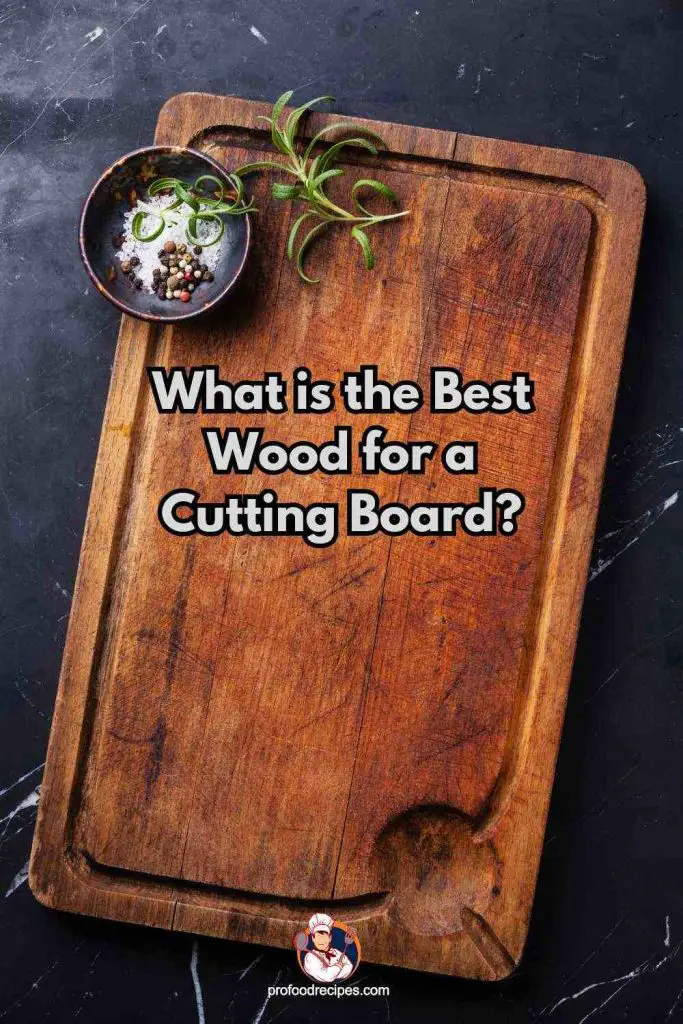
What is the Best Wood for a Cutting Board?
Table of Contents
Wood cutting boards are the most used kitchen tool in our regular life. So, it should be the best quality cutting board. All wood cutting boards may not offer you the same result. So, let’s first check what the common and popular choices are for wooden cutting boards.
1. Teak
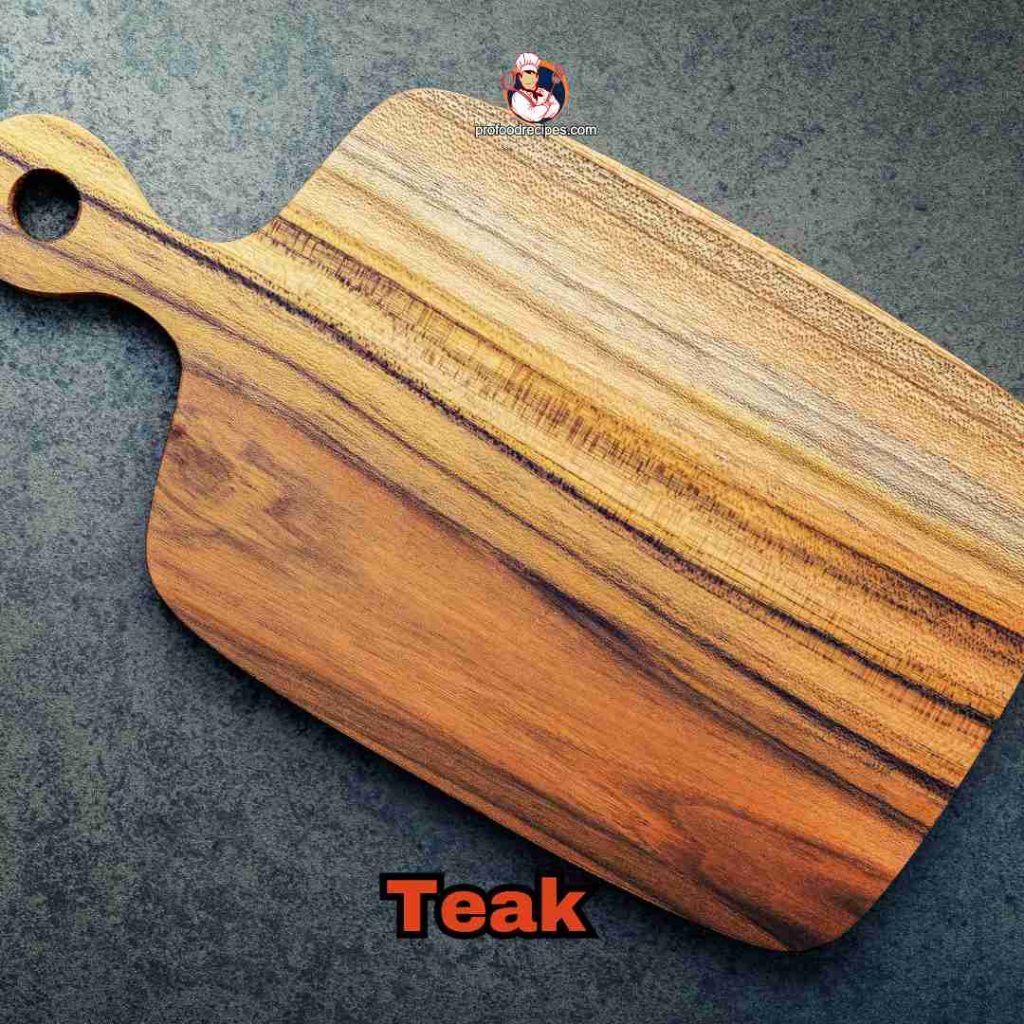
If you are searching for a heavy use cutting board wooden, then teak will be one of the great choices. These woods come from southeast Asian tree teak. The hardness rating is 1000-1155. These woods are comparably harder than white pine, cedar, poplar, or Mahogany.
Additionally, these woods are nontoxic. So, you can make all your veggies or fruit cutting on these boards and prepare your food safely.
2. Beech
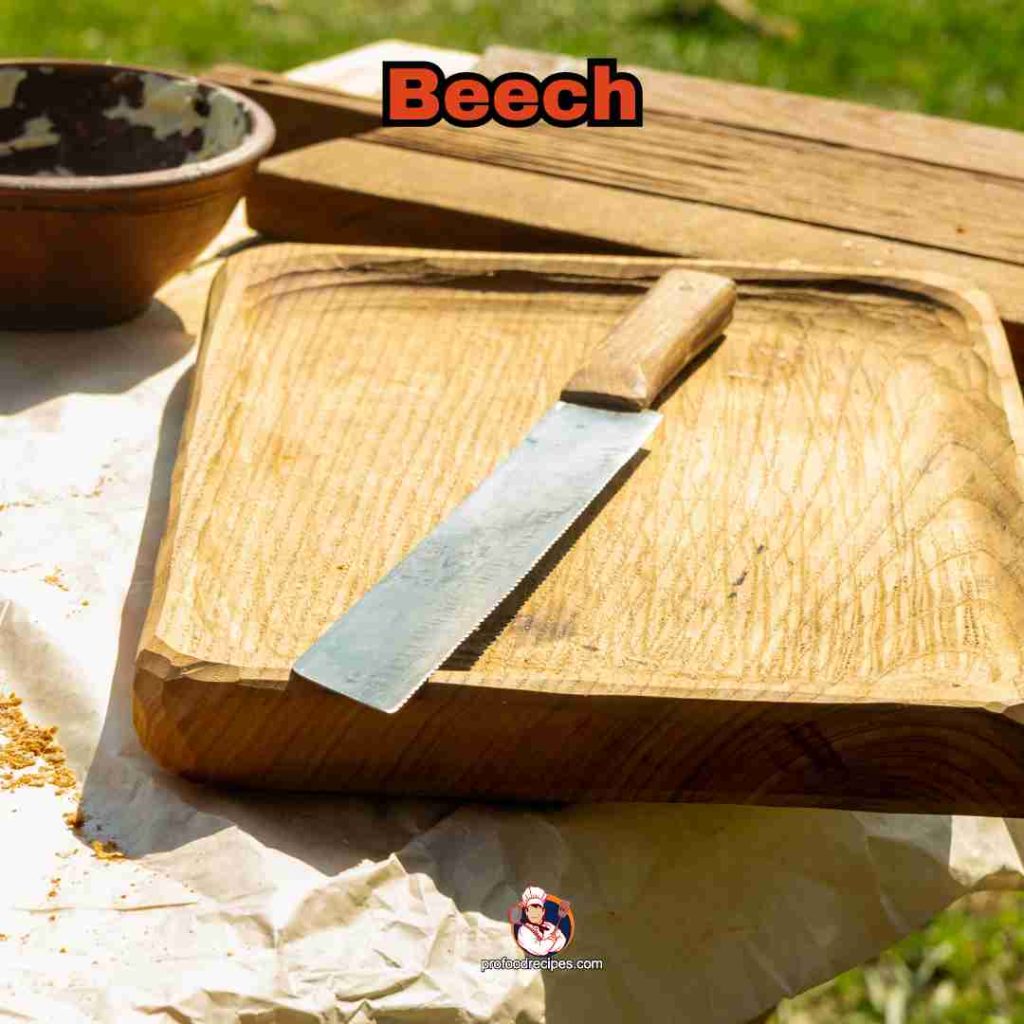
One of the most popular wood cutting materials is Beech. These wooden cutting boards are easy to handle and an incredible choice to cut many ingredients. Beechwood holds a 1300-1400 hardness rating, including antibacterial properties.
This woods for cutting boards is more hygienic than plastic boards. This greener and environment friendly option will offer you safe chopping and cooking.
3. Maple
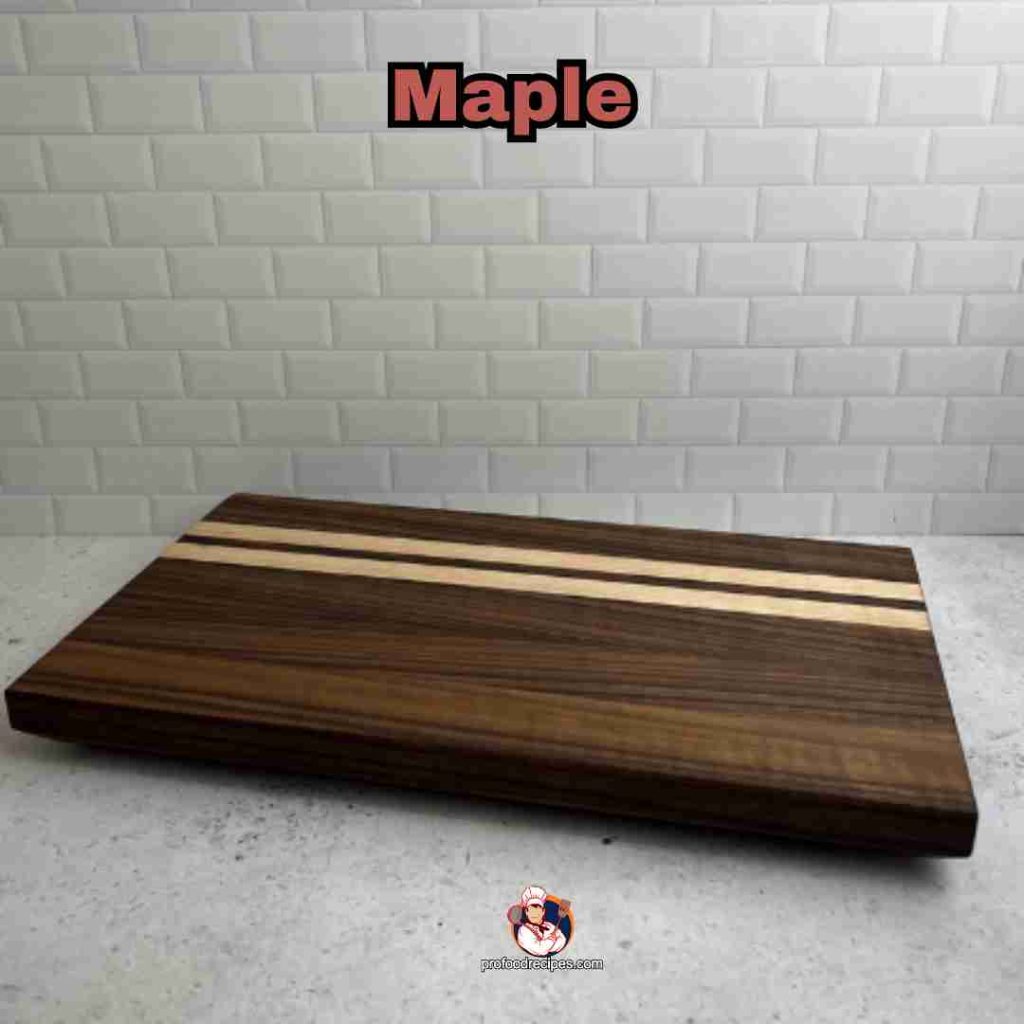
Another industry standard cutting board is Maple. Sugar maple wood or hard maple wood is especially cherished due to its durability. According to the Janka scale, its hardness is about 1450 lbf.
5 to 10 years, this cutting wood board will fluently offer you a great chopping experience. Moreover, this ultra durable chopping board is affordable also.
4. Walnut
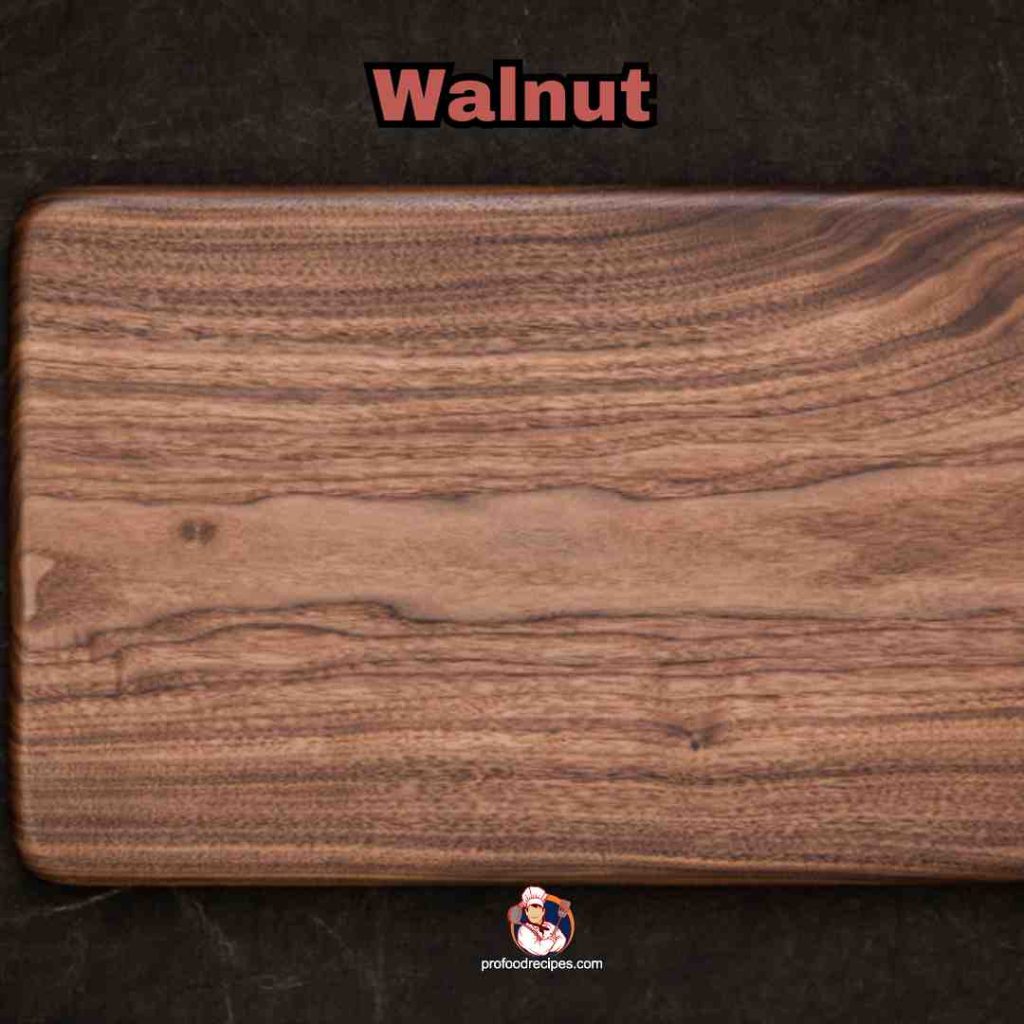
One of the eye catchy cutting board woods is walnut. This comprises a rich and unique color pattern. They have a dense tissue. So, Their shapes are tough to determine, even through high magnification.
That’s why it has a 1010 hardness, and Brazilian walnut has a 3680 lb. Walnut is comprised of moderate bending and crushing strengths. Additionally, it comprises a well steam-bending classification.
5. Mahogany
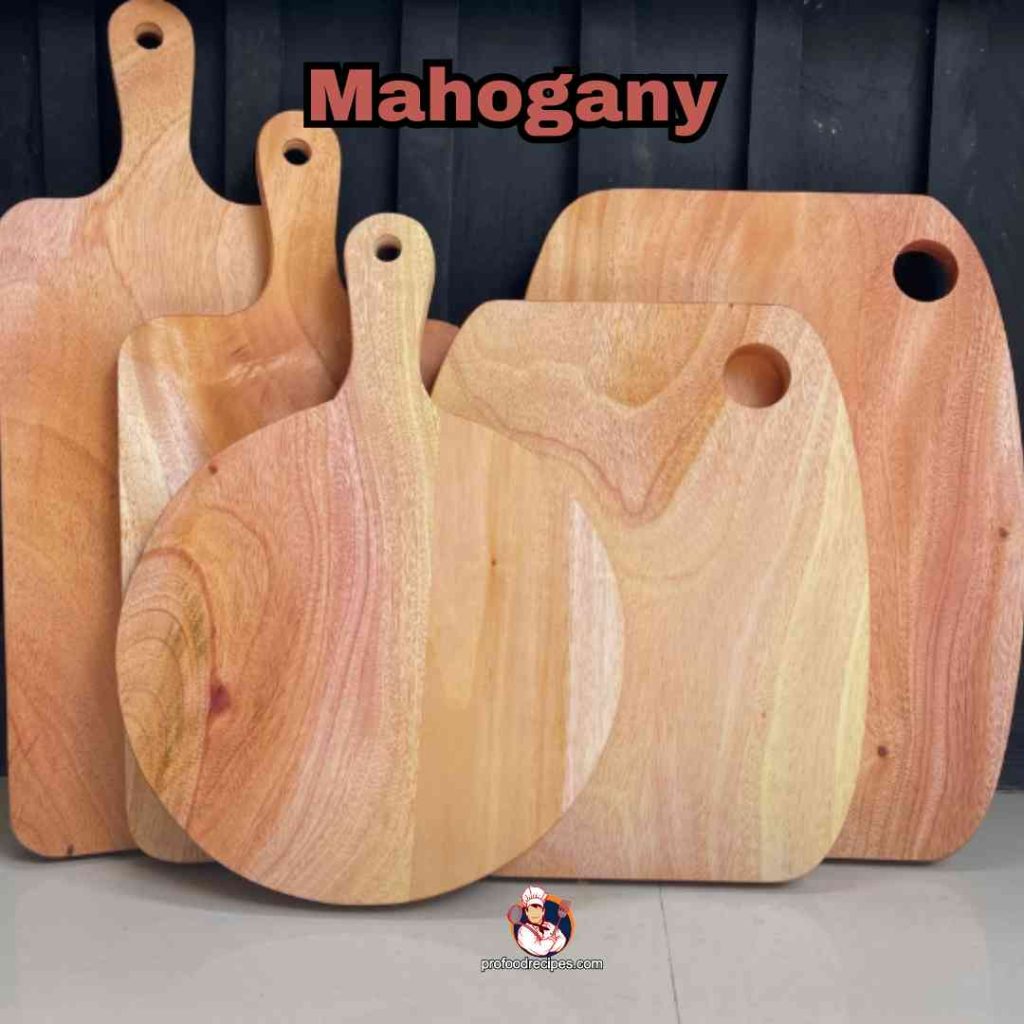
Another common wood is Mahogany. It’s harder than other woods like pine and oak. This hardness may be 70% greater stable than others. Moreover, according to Janka, these wood cutting boards comprise 800 lbf.
People cherish it for its fine grain and stability. So, as a chopping board, they may be a great choice for you.
6. Cherry
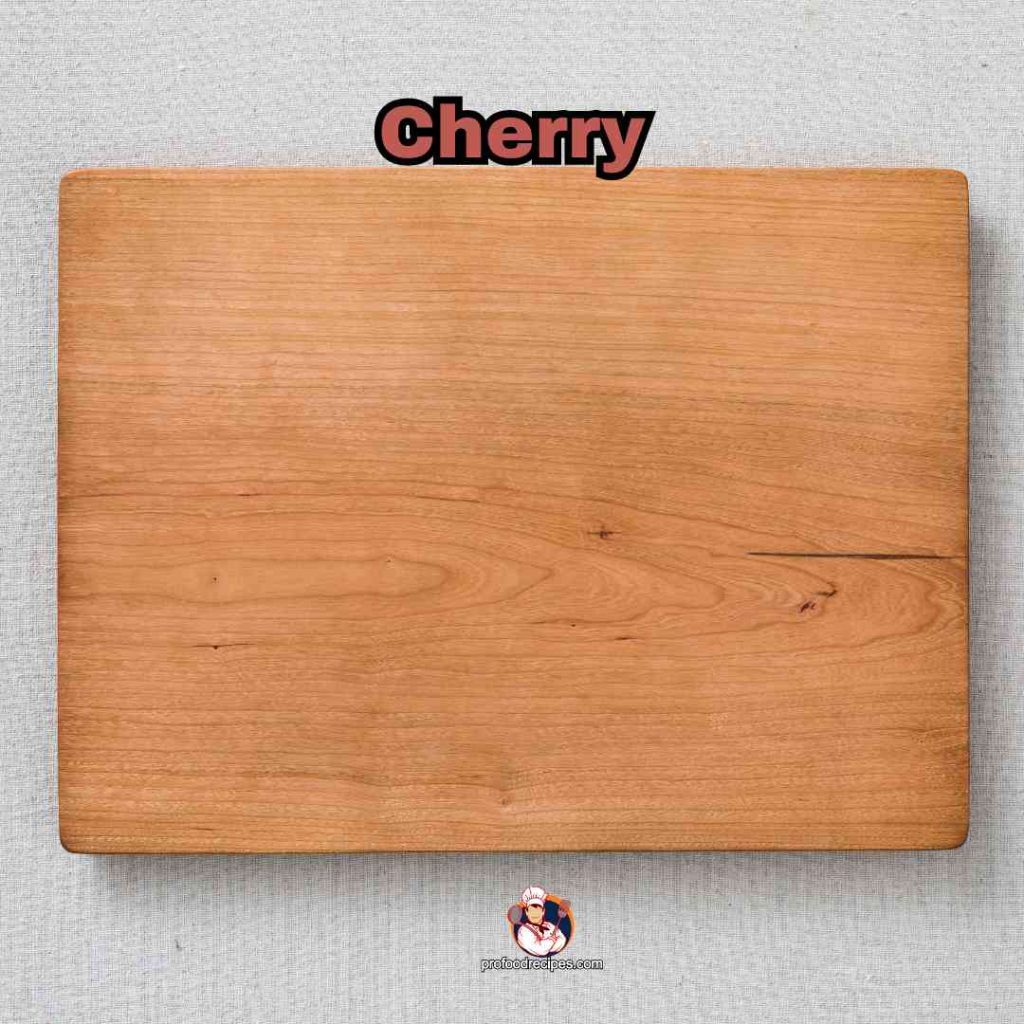
Another luxurious and richer wood cutting board option is cherry. This warm wood is such a hardwood that is known as softer nature wood.
Usually, cherry wood has a lower hardness rating than Maple. But Brazilian cherries are a very strong wood which has 2350 hardness. So, you can pick it as a long lasting wood cutting board.
How to Choose Best Wood Cutting Boards?
There are many things that you may consider to get the best cutting boards wood for your kitchen. They may introduce you to the best type of wood cutting boards and the best quality.
Materials
The type of wood used for the cutting board impacts its durability and appearance. Maple and walnuts are widely used for their strength and lovely appearance.
Teak and acacia wood boards are affordable and easy to maintain. On the contrary, bamboo boards are durable but can be harsh on knife blades. Besides Brazilian cherry, Beech and mahogany wood for cutting boards are great options to consider.
Quality
When searching for a good cutting board, you need to prioritize quality. You need to check for boards that are resistant to cracking and warping. This ensures they won’t dull or harm your knife blades. Moreover, they will last longer and are more cost effective ones.
Moreover, you may need to choose thick and spacious options for comfortable work. Remember, not all woods are equal. So, including the material, you need to check the quality also. Buying from well known brands may introduce you to an incredible quality.
Convenience
You may get 2 types of wooden cutting boards such as end grain boards and edge grain boards. The end grain board of the cutting boards resembles butcher blocks. They allow cutting with the wood fibers and keep knife blades sharper for longer. They are stable and easier to clean.
On the contrary, edge grain boards are more economical. They are less prone to expansion and offer a budget-friendly option.
Maintenance
Another crucial factor to consider is maintenance. So, which one is easy to maintain, you should go with that option.
For example, Edge grain boards require less maintenance than end grain boards. They are less susceptible to water and juice damage. Moreover, they are less likely to expand or warp over time.
Therefore, opting for an edge grain wood cutting board would be the easier choice for maintenance.
Safety
Maple and walnut cutting boards are safe choices because they’re durable and resist bacteria. Tight grains make it hard for bacteria to get in, keeping your food prep area clean.
Acacia and Teak boards are safe as they have natural antimicrobial characteristics. So, these are good options for your kitchen.
What Woods to Avoid in Cutting Boards?
Below are some wood qualities that you should avoid when using cutting board material. Let’s check them.
Softwoods
Softwoods are less sturdy and more prone to damage from knives. They’re also porous. So, they may absorb liquids and bacteria. This makes them less hygienic for food prep. For example, balsa, redwood, pine, and cedar are softwoods. You need to ditch them and pick them for maple or walnut type hardwoods.
Porous Woods
Porous woods have tiny holes in their structure that trap odors, moisture, and bacteria. This makes them less clean for cutting boards. Because these contaminants can get stuck and grow. And this can be harmful to your health.
So, it’s better to choose non-porous hardwoods, like Maple or cherry. This ensures a cleaner and safer surface for food prep.
Toxic Woods
Those woods contain natural toxins or allergens-type harmful substances; you need to avoid them as cutting boards.
Woods like yew, oleander, and laburnum can release toxic compounds when cut or in contact with food. So, you need to avoid them to prevent health risks.
Read More:
FAQs
What is the Hardest Wood for a Cutting Board?
The hardest wood for a cutting board is typically Maple. Especially sugar maple or hard Maple are considered the hardest. Its dense, closed-grain structure makes it exceptionally durable and resistant to bacteria. People cherish Maple wood for its toughness and suitability. They are great for heavy duty cutting tasks in kitchen environments.
What is the Healthiest Cutting Board Material?
The healthiest choice for a cutting board is solid wood with a natural oil finish. It’s safer than plastic or composite materials. And it comprises natural antibacterial properties. This makes the cutting board less likely to grow harmful bacteria.
What is the Least Toxic Cutting Board?
The least toxic cutting board options include those made from materials such as bamboo, solid wood with a natural oil finish, or pure rubber without antimicrobial treatments. These materials reduce the exposure to dangerous chemicals and pollutants. Thus, they may provide a safer option for food preparation.
Is Oak Good for Cutting Boards?
No, oak wood, though, comes with a high hardness rating; it comprises porous grain. So, they may absorb the liquid and ingredients through chopping. And later, it may grow bacteria. So, it’s best to avoid and pick the safest materials.
Final Verdict
What is the best wood for a cutting board? When you select a wood cutting board, you need to prioritize durability and safety.
Maple, teak, Beech, walnut, and cherry are top choices due to their strength and hygiene.
Moreover, you may need to avoid porous woods, softwoods, and toxic options for a healthier food prep area.
By focusing on quality, ease of maintenance, and safety, you’ll find the perfect cutting board for your kitchen.
You May Also Like to Read:
- Can You Use Induction Cookware on a Gas Stove?
- Is Granite Stone Cookware Safe?
- What Are the Different Types of Crockery and Their Sizes?
- Stamped Vs Forged Knife
- Can I Make Cupcakes Without Liners?
